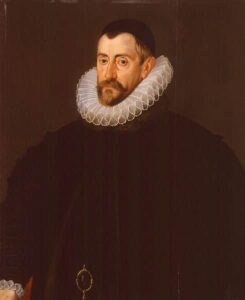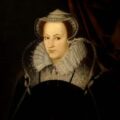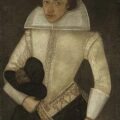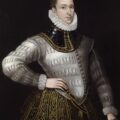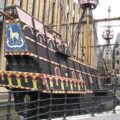On this day in history, 6th April 1590, Sir Francis Walsingham died at about the age of 58. He was an incredibly important man during Elizabeth I’s reign being a statesman, private secretary, adviser, diplomat and spymaster, and he probably saved the Queen’s life many times by uncovering various plots against her. Let’s celebrate Walsingham’s life with a Sir Francis Walsingham bio.
Sir Francis Walsingham Bio
Born: c1532 (some say 1530), Scadbury Park, Chislehurst, Kent
Family Background: Son of William Walsingham and Joyce Denny. His father died when he was an infant and his mother married Sir John Carey, a relation of Mary Boleyn, Anne Boleyn’s sister. Walsingham’s father was common sergeant of London, his mother was related to Sir Anthony Denny, a member of Henry VIII’s privy council, and his uncle, Sir Edmund, was Lieutenant of the Tower of London.
Education: Walsingham studied at King’s College, Cambridge, and then, in 1550, he went abroad to continue his education. In 1552 he returned to England and enrolled at Gray’s Inn (The Honourable Society of Gray’s Inn, an Inn of Court). When Mary I came to the throne, Walsingham, who was a staunch Protestant, fled abroad and continued his law studies at the University of Padua and then lived in Switzerland between 1556 and 1558.
Early Career: Elizabeth I’s accession to the throne in 1558 meant that Walsingham could return to England. In 1559 his friendship with Sir William Cecil helped him to become a member of Parliament for Banbury and then for Lyme Regis in 1563.
Marriage: First marriage was to to Ann Carleill, a widow with a son called Christopher. She died leaving Christopher in Walsingham’s care. Second marriage was to Ursula St Barbe, also a widow (her late husband was Sir Richard Worsley).
Children: Walsingham had a stepson, Christopher Carleill from his first marriage and two further stepsons from his marriage to Ursula – John and George. Unfortunately John and George were both killed in 1567 in an accident with gunpowder. Walsingham and Ursula had a daughter together, Frances Walsingham. Frances was a lady-in-waiting to Elizabeth I and married Philip Sidney in 1583. After his death she married Robert Devereux, the 2nd Earl of Essex and then after his execution Frances married Richard de Burgh.
Career Serving the Queen: In 1569, Walsingham was asked by William Cecil to investigate the Ridolfi Plot. In 1570 Elizabeth I asked Walsingham to help the Huguenots in France negotiate with Charles IX because he had built up a good relationship with them. In the same year, he became the ambassador to France and it was to his house that Protestant refugees fled to during the time of the St Bartholomew’s Massacre and other troubles.
In 1573, Walsingham returned to England and was rewarded for his hard work by being made the Queen’s principal secretary, a position he shared with Sir Thomas Smith until 1576 when Smith retired. In 1577 he was rewarded again with a knighthood and was trusted with special embassies in 1578 and 1581 to the Dutch and French courts.
In the late 1570s, Walsingham was known for his opposition to the plans to encourage Elizabeth I to marry the Duke of Anjou and also for his encouragement of military intervention in the Low Countries. In the mid to late 1580s he and William Cecil worked on preparing England for war with Spain.
Walsingham the Spymaster: Although Walsingham was an important diplomat and the Queen’s principal secretary for a time, he is best known as Elizabeth I’s spymaster and his successful work uncovering plots against the Queen. He worked on uncovering the Ridolfi Plot and also put a stop to the Throckmorton (Throgmorton) and Babington Plots – you can read more about these in “Plots Against Elizabeth I”. It was the Babington Plot which convinced Elizabeth I of the need to execute Mary Queen of Scots and Walsingham was one of her advisers who encouraged her to take this course of action.
Nickname: Elizabeth I, who loved giving her friends and advisers nicknames, called Walsingham her “Moor”.
Character: He was a devout Protestant and was known for being down to earth and for his straight talking.
Died: 6th April 1590, Chislehurst, Kent. Walsingham died in debt due to taking on the debts of Sir Philip Sidney, his son-in-law, when he died and the expenses he incurred living beyond his means shortly before his death. A sad end to a man who had spent his life in loyal service to the Queen.
Sources
- Wikipedia – Sir Francis Walsingham page
- www.elizabethan-era.org.uk
- www.luminarium.org
